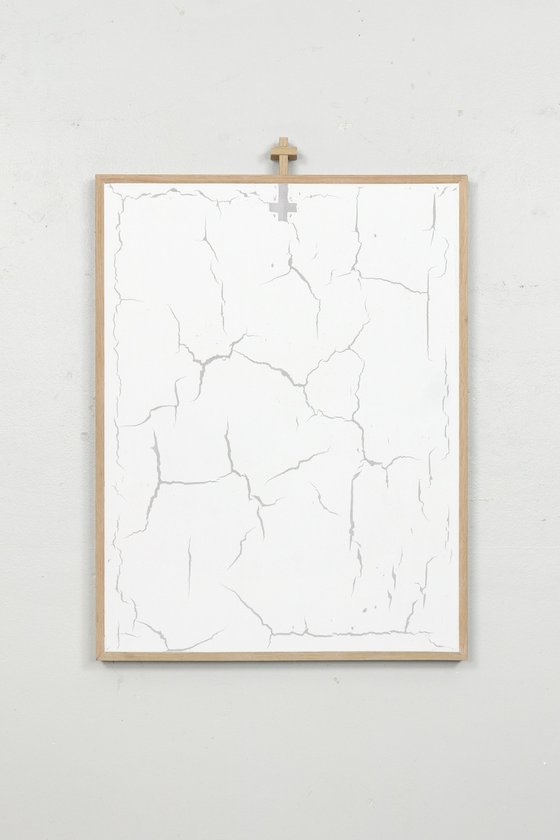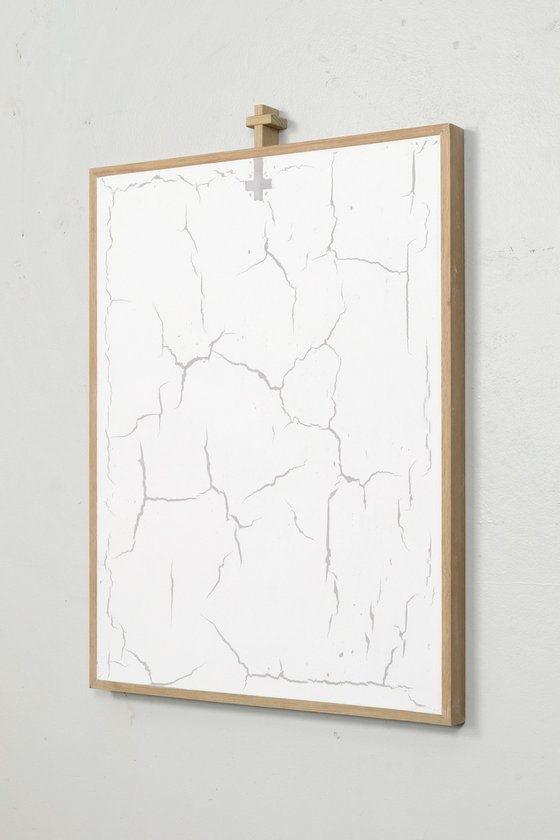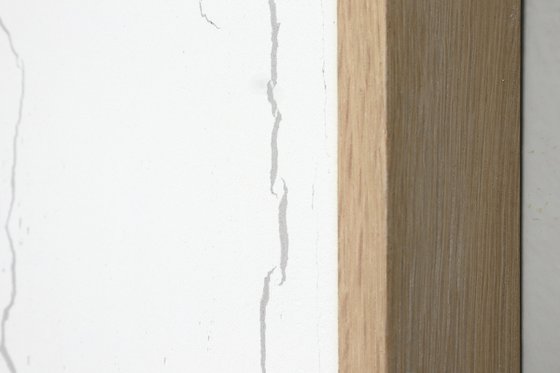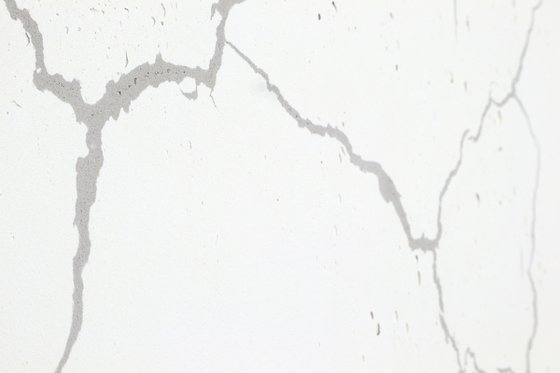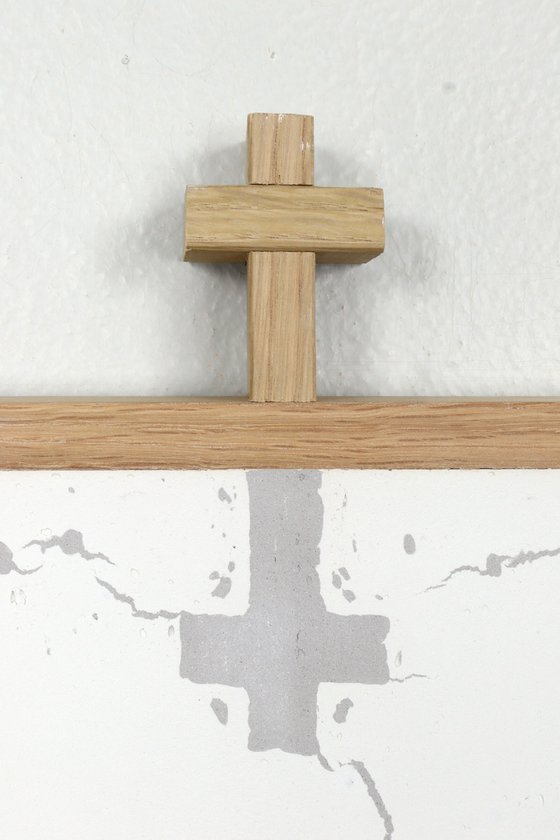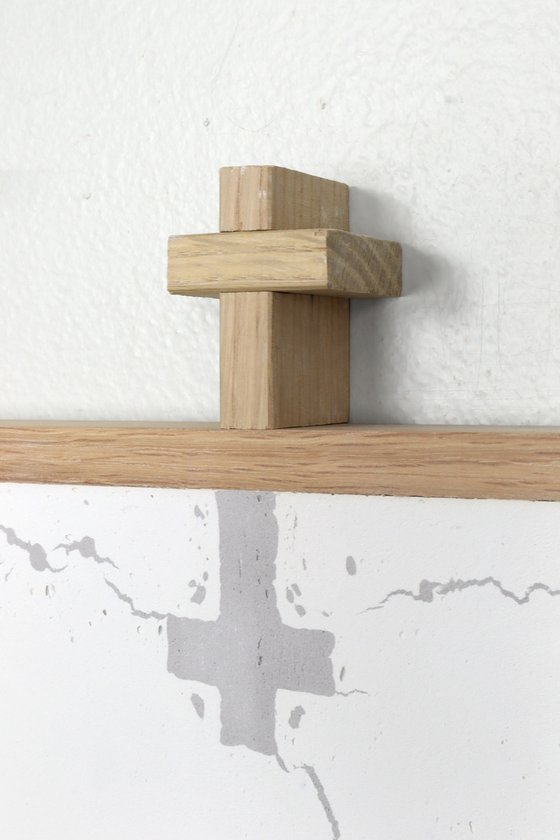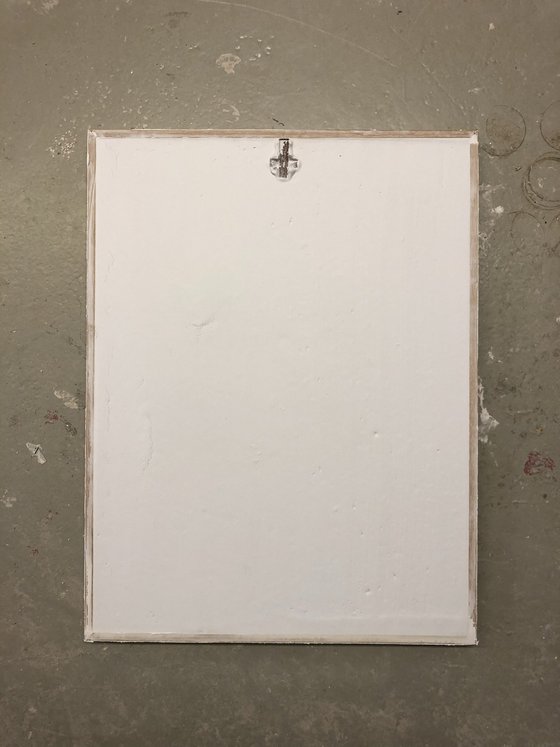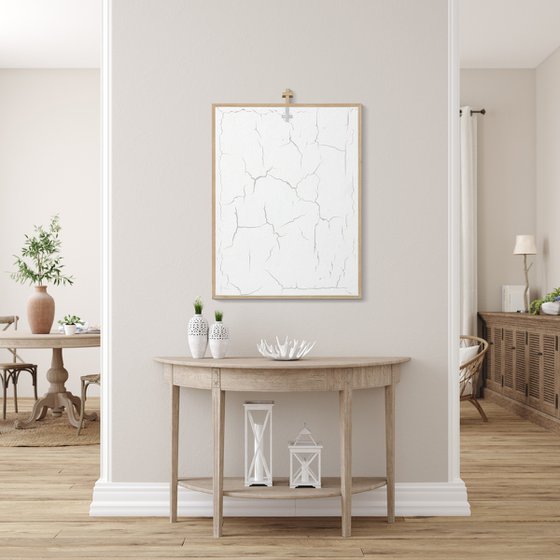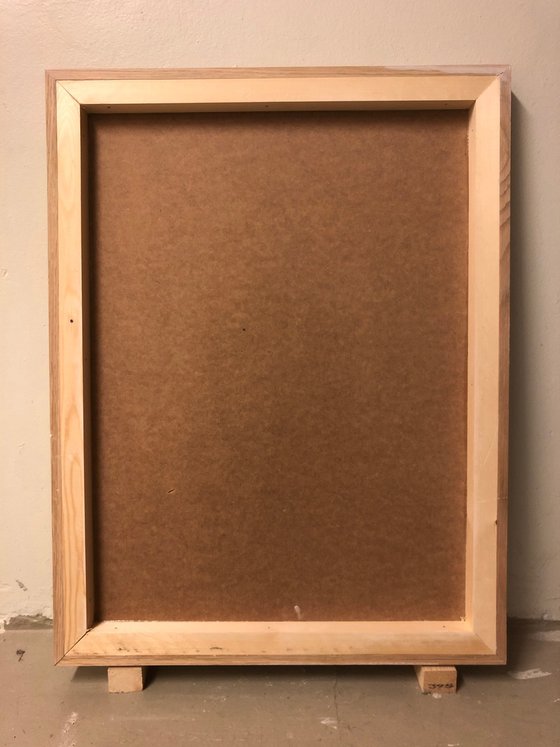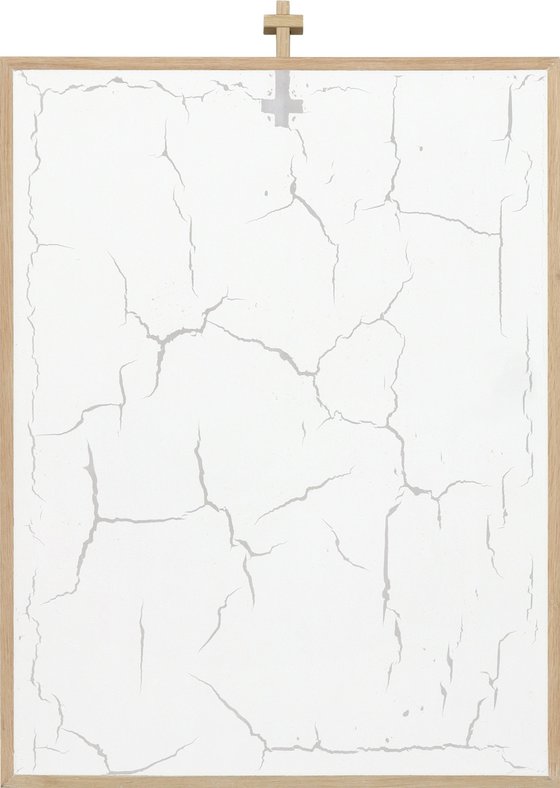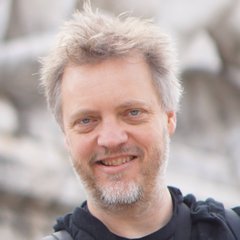- By medium
- By subject
- By budget
- Sales
- Gift cards
- Discover all art
- Artists
- Editors’ picks
- Ideas
Original artwork description:
64x84 cm | Filler, oak panel
This work features a small wooden cross on top of the panel.
The self-aware subject cannot imagine a world in which it does not exist. We can accept and understand it is possible, but imagining something presupposes a perspective, precisely what the non-existent lacks. If we think of ourselves as dead in a secular way, we may experience it as a void or darkness. But we cannot imagine a non-experience. That's why we like to see the boundary to death as a reflective surface. Death reflects life in such a manner that it is also a place where the subject belongs. It has become the task of religion to describe this, and the cross symbolizes the victory of life over death within Christian culture.
Imagining something is an act that requires language. To live is to use language to relate to the outside world. The experience of being alive and observing the world is a linguistic act. As we experience the world through language, reality becomes a picture we find ourselves in, but at the same time, paradoxically perceive from the outside.
What is exterior to the image is raw physical matter. The domain of death can be described as a world without semiotics. Reality beyond language.
The small wooden cross on the panel is above the picture, but the imprint of it is inside. The dead matter, reality itself, can only be experienced as mirrored, a reflection. The gap between them is unbridgeable unless we lose ourselves and retreat to the boundless register of the non-semantic.
I have called this work Shallow Grave because all graves are actually shallow. Our memory lives on in language for a short while, and then we are gone forever.
Materials used:
Filler (coarse and fine) in oak frame
Tags:
#abstract #painting #minimalism #filler #oak frame#462 Shallow Grave (2023) Painting
by Johan Söderström
1 Artist Reviews
£1,373.73
- Painting on Panel / Board / MDF
- One of a kind artwork
- Size: 64 x 84 x 5cm (framed)
- Framed and ready to hang
- Signed on the back
- Style: Abstract
- Subject: Abstract and non-figurative
Loading
Original artwork description
64x84 cm | Filler, oak panel
This work features a small wooden cross on top of the panel.
The self-aware subject cannot imagine a world in which it does not exist. We can accept and understand it is possible, but imagining something presupposes a perspective, precisely what the non-existent lacks. If we think of ourselves as dead in a secular way, we may experience it as a void or darkness. But we cannot imagine a non-experience. That's why we like to see the boundary to death as a reflective surface. Death reflects life in such a manner that it is also a place where the subject belongs. It has become the task of religion to describe this, and the cross symbolizes the victory of life over death within Christian culture.
Imagining something is an act that requires language. To live is to use language to relate to the outside world. The experience of being alive and observing the world is a linguistic act. As we experience the world through language, reality becomes a picture we find ourselves in, but at the same time, paradoxically perceive from the outside.
What is exterior to the image is raw physical matter. The domain of death can be described as a world without semiotics. Reality beyond language.
The small wooden cross on the panel is above the picture, but the imprint of it is inside. The dead matter, reality itself, can only be experienced as mirrored, a reflection. The gap between them is unbridgeable unless we lose ourselves and retreat to the boundless register of the non-semantic.
I have called this work Shallow Grave because all graves are actually shallow. Our memory lives on in language for a short while, and then we are gone forever.
Materials used:
Filler (coarse and fine) in oak frame
Tags:
#abstract #painting #minimalism #filler #oak frame14 day money back guaranteeLearn more
